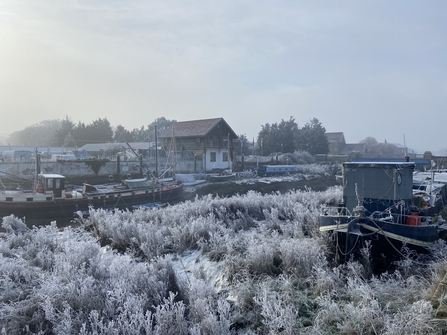I love a snow day. Who doesn’t? They’re usually filled with cosy pyjamas, warm mugs of hot chocolate and sledging down the local hills (which are few and far between in low-lying Essex). We might usually be blessed with a day or two of snow in February, March or April, but this year, many of us Essexonians have enjoyed snow in December. It has been bone-shatteringly, teeth-chatteringly cold and I, for one, have made the most of the Christmassy chill.
Before the snow there were days and days of sub-zero temperatures, painting the gelid landscape in crystal white. Splashes of robin red zipped across the muted canvas and landed on branches, fluffing up their feathers to keep warm. On one of these crystalline days, someone described the ice as a ‘hoar frost’, which got me thinking: what are the different types of frost?
Air Frost
According to the Met Office, ‘an air frost occurs when the air temperature falls to or below the freezing point of water.’ This is usually defined as the air temperature being below zero at a height of at least one metre above the ground.
Ground Frost
A ground frost is when ice forms on the surface – as well as objects or trees. These surfaces have to reach a temperature below the freezing point of water and, because the ground can often cool quicker than the air, a ground frost can occur without an air frost.
There is another un-official type called a ‘grass frost’ which takes place when other surfaces like concrete or tarmac don’t experience a frost as they are better at holding onto their warmth. Gardeners have to be aware of grass frost in particular as it can occur into late spring and even early summer, after the risk of more wide-spread frosts have disappeared.
Hoar Frost
A hoar frost is composed of tiny ice crystals and formed by the same process as dew but when the surface temperature is below freezing point. It can have a ‘feathery’ (or even ‘fluffy’) appearance which forms when the surface temperature reaches freezing point before dew begins to form. When dew forms first and then freezes, the ice looks more globular – like frozen droplets – which is called a ‘white’ frost. If the night is foggy rather than clear then the formation of hoar frost is less likely because fog prevents surfaces from cooling as quickly.


